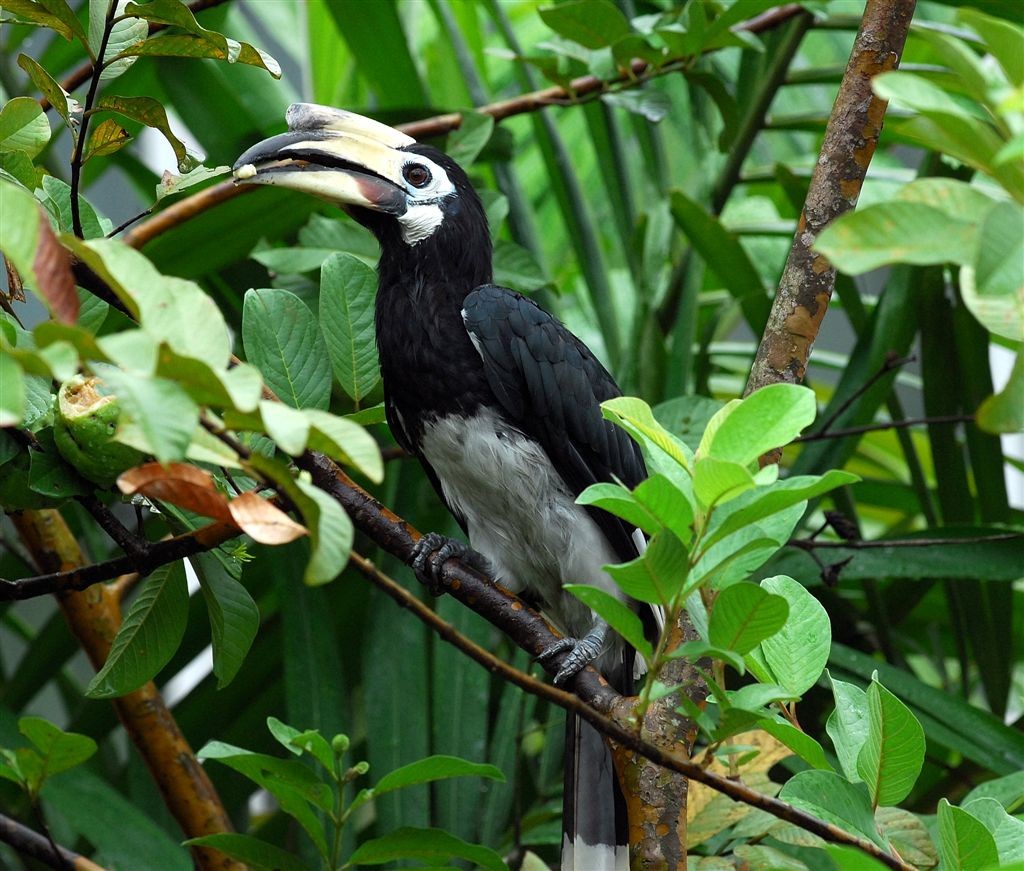Oriental Pied Hornbill
A species of Asian Pied Hornbills and Allies Scientific name : Anthracoceros albirostris Genus : Asian Pied Hornbills and Allies
Oriental Pied Hornbill, A species of Asian Pied Hornbills and Allies
Botanical name: Anthracoceros albirostris
Genus: Asian Pied Hornbills and Allies
Content
Description People often ask General Info
Description
The plumage of the head, neck, back, wings and upper breast is black with a slight green sheen. The plumage of their lower breast, lower abdomen, thighs, under-wing and all the tips of the wings except the three basal secondaries and two outer primaries is white, as is the circumorbital skin around the eyes and on the throat skin. A blue tinge can sometimes be noticed on the throat of adults. Males can be distinguished from females by their larger body size, yellow bill, which has a black base, and bright red eyes. 
Size
60 cm
Nest Placement
Cavity
Feeding Habits
Oriental Pied Hornbill primarily consume fruits like figs, berries, and papaya, but also eat insects, small birds, reptiles, amphibians, and fish. They forage trees for food, displaying versatility in their diet and adaptability to various food sources.
Habitat
Oriental Pied Hornbill primarily inhabits subtropical and tropical moist lowland forests across broader regions. These birds are versatile in their choice of environment, residing in a range of habitats such as dry and semi-evergreen forests, deciduous forests of both moist and dry varieties, and subtropical broadleaf forests. They are also found in secondary forests and woodlands, extending to man-modified landscapes like plantations. Oriental Pied Hornbill can be seen at elevations up to 700 meters, venturing into open areas of secondary forest and cultivated lands adjacent to evergreen forest edges.
Dite type
Omnivorous
People often ask
General Info
Feeding Habits
Bird food type
Distribution Area
The oriental pied hornbill is found in the Indian Subcontinent and Southeast Asia, ranging across Bangladesh, Bhutan, Brunei, Cambodia, Eastern and Northern India, Indonesia, Laos, North peninsular Malaysia, Myanmar, Nepal, Singapore, Thailand, Tibet, Vietnam and the Sunda shelf islands. 
Species Status
The species has an extremely wide range and appears to be the hornbill species most adaptable to habitat alterations; it is thus not currently considered to be threatened. What declines in oriental pied hornbill population have been reported are mainly caused by legal and illegal logging, which decreases the availability of suitable nesting and fruiting trees. A. albirostris are subject to some hunting pressure (casques are sold as souvenirs) and are popular as pets in some areas. 
